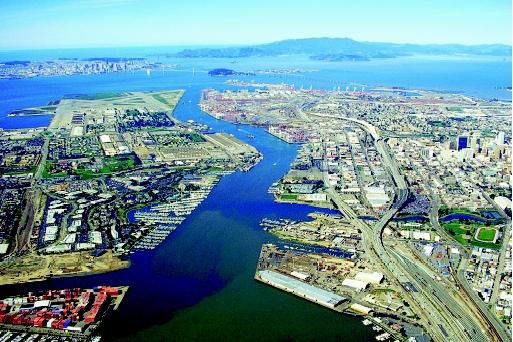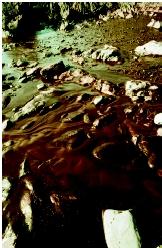Oil wastes that enter the ocean come from many sources, some being accidental spills or leaks, and some being the results of chronic and careless habits in the use of oil and oil products. Most waste oil in the ocean consists of oily stormwater drainage from cities and farms, untreated waste disposal from factories and industrial facilities, and unregulated recreational boating.
It is estimated that approximately 706 million gallons of waste oil enter the ocean every year, with over half coming from land drainage and waste disposal; for example, from the improper disposal of used motor oil. Offshore drilling and production operations and spills or leaks from ships or tankers typically contribute less than 8 percent of the total. The remainder comes from routine maintenance of ships (nearly 20 percent), hydrocarbon particles from onshore air pollution (about 13 percent), and natural seepage from the seafloor (over 8 percent).
Prevalence during Drilling versus Transportation
Offshore oil spills or leaks may occur during various stages of well drilling or workover and repair operations. These stages can occur while oil is being produced from offshore wells, handled, and temporarily stored; or when oil is being transported offshore, either by flowline, underwater pipeline, or tanker. Of the approximately 706 million gallons of waste oil in the ocean each year, offshore drilling operations contribute about 2.1 percent, and transportation accidents (both ships and tankers) account for another 5.2 percent. The amount of oil spilled or leaked during offshore production operations is relatively insignificant.Oil waste from offshore drilling operations may come from disposal of oil-based drilling fluid wastes, deck runoff water, flowline and pipeline leaks, or well failures or blowouts. Disposal of offshore production waste can also pollute the ocean, as can deck runoff water, leaking storage tanks, flowline and pipeline leaks, and the wells themselves. Oil spilled from ships and tankers includes the transportation fuel used by the vessels themselves or their cargos, such as crude oil, fuel oil, or heating oil.
Read more: Oil Spills: Impact on the Ocean - sea, effects, temperature, percentage, important, largest, types, source, marine, oxygen, human http://www.waterencyclopedia.com/Oc-Po/Oil-Spills-Impact-on-the-Ocean.html#ixzz1CRzw0e5M

Over half the ocean's waste oil comes from land-based sources and from unregulated recreational boating. The heavy development in this busy California port illustrates one potential source of petroleum contamination in coastal waters. (Note dark plume in left foreground.)
Oil Spill Behavior
When oil is spilled in the ocean, it initially spreads in the water (primarily on the surface), depending on its relative density and composition. The oil slick formed may remain cohesive, or may break up in the case of rough seas. Waves, water currents, and wind force the oil slick to drift over large areas, impacting the open ocean, coastal areas, and marine and terrestrial habitats in the path of the drift.Oil that contains volatile organic compounds partially evaporates, losing between 20 and 40 percent of its mass and becoming denser and more viscous (i.e., more resistant to flow). A small percentage of oil may dissolve in the water. The oil residue also can disperse almost invisibly in the water or form a thick mousse with the water. Part of the oil waste may sink with suspended particulate matter, and the remainder eventually congeals into sticky tar balls. Over time, oil waste weathers (deteriorates) and disintegrates by means of photolysis (decomposition by sunlight) and biodegradation (decomposition due to microorganisms). The rate of biodegradation depends on the availability of nutrients, oxygen, and microorganisms, as well as temperature.
Oil Spill Interaction with Shoreline.
If oil waste reaches the shoreline or coast, it interacts with sediments such as beach sand and gravel, rocks and boulders, vegetation, and terrestrial habitats of both wildlife and humans, causing erosion as well as contamination . Waves, water currents, and wind move the oil onto shore with the surf and tide.
Crude oil from the Sea Empress tanker spill coats a beach at Pembrokeshire, Wales in 1996. Although marine transportation accidents can result in such oil spills, they account for only about 5 percent of the waste oil that enters the ocean annually.
Beach sand and gravel saturated with oil may be unable to protect and nurture normal vegetation and populations of the substrate biomass . Rocks and boulders coated with sticky residue interfere with recreational uses of the shoreline and can be toxic to coastal wildlife.
Read more: Oil Spills: Impact on the Ocean - sea, effects, temperature, percentage, important, largest, types, source, marine, oxygen, human http://www.waterencyclopedia.com/Oc-Po/Oil-Spills-Impact-on-the-Ocean.html#ixzz1CS0A4Tsa